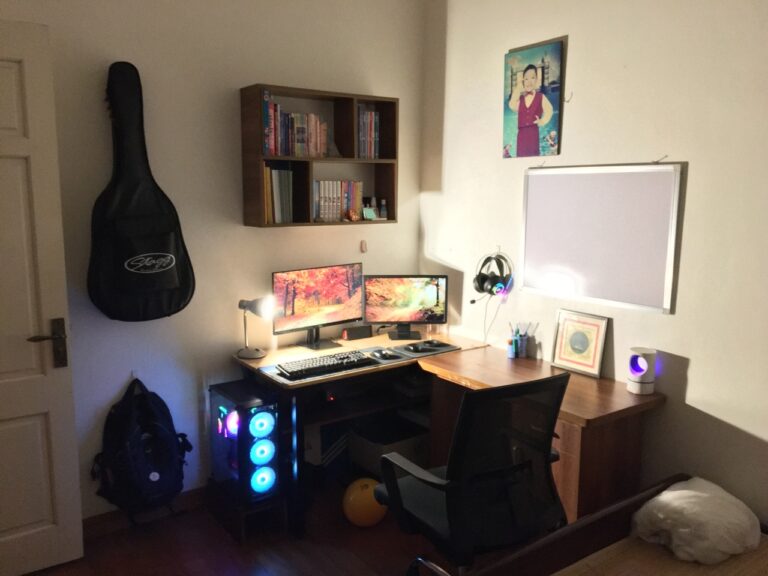|
The Art of File and Folder Organization
We all love the idea of being super organized, right? We make these grand plans, give it our all for a few weeks or months, and then, bam! We’re back to the good old “throw it in the downloads folder with everything else” routine. It happens to the best of us, and I’m guilty too. But hey, even though I’ve still got loads of room for improvement, I can proudly say I’ve gotten way faster at finding my files.
Phase One (2014-2019): The Awakening
I stored all my files in the initial phase in the download folder. At that time, with my first laptop and just one attached hard drive, I wasn’t concerned about efficiently organizing my files. Typically, I heavily rely on browsers while using our PCs. Most of my files originated from internet downloads—games, program installation, and office files from Gmail, Facebook, and Messenger. As you may know, none of these were particularly crucial: once I downloaded them, I never looked back. However, my awareness of this inefficient system grew as I began experiencing difficulties locating specific files and noticed duplications due to multiple downloads. The tipping point was when I spent nearly an hour searching for a homework document, resulting in a late submission to my teacher. This prompted me to reconsider and change my approach.

Image courtesy of Folder Tidy
Phase Two (2019-2021): Aesthetic Revolution
I initiated using folders to categorize file types and employed Internet Download Manager to organize downloaded files based on filename extensions automatically. As someone who values aesthetics, I went further by customizing folder icons for each category, replacing the default “folder” icon on Windows. Placing these folders in Quick Access significantly enhanced the efficiency of file retrieval.

However, I found the process inefficient when collaborating online with others for studying or project presentations. Organizing files downloaded from shared Drive folders and re-uploading them became time-consuming. Consequently, I realized the need to alter my file organization methods for both offline and online activities.
Phase Three (2021-2023): Google Drive Renaissance
I dedicated time to thoroughly reorganizing my Google Drive, which had been messy from its use as temporary storage, before transferring files to my offline storage. Despite long-standing plans to address this, the chaotic state of my Google Drive had deterred me. The turning point came when I had to switch from my laptop to a new PC. In the past, I often neglected the backup process: I would have unplugged my hard drive and connected it to the new PC, risking the loss of essential files. But the thing is, there were many important files on it, and I was told by many sources that I should back it up to several Cloud Storage before executing the change. That also allowed me to rearrange things, e.g., filtering out unnecessary files, moving big files onto the USB, and uploading essential files to Google Drive.

Here’s my Drive after fixing it. The two folders, “Application” & “College,” are synced with my offline files
Additionally, I discovered the Google Drive for Desktop App. It mirrors my Drive files, mounting them to the chosen location’s virtual disk. This means all the changes I made on the offline files will be automatically synced with the files on the cloud, reducing the significant time of waiting for uploading.
Current & Future: Expanding Horizons

Recently, I obtained a 5TB OneDrive from the Microsoft 365 free E5 Developer Pack, expanding my file storage capacity. This includes game installation files, video editing projects, and downloaded online courses. Files for collaboration with friends and teachers, such as homework assignments, IELTS, and SAT papers, are stored on Google Drive. Moreover, with the arrival of a refurbished computer that I turned into a Synology NAS, I now have more options for file storage. This NAS serves as my torrent server for streaming films, shows, audiobooks, etc., through platforms like Jellyfin and Audiobookshelf. I plan to share my journey of building self-hosting in the near future, but for now, I am satisfied with my current setup.
In the future, I may adopt new techniques to organize my files more efficiently. As of now, I have switched to macOS, and with the wonderful search app called Raycast (Spotlight alternative), I guess I may return to the era where I would store my files a bit more freely, as opposed to the strict tree structure now. Because with the tree structure method, it still takes me several steps to navigate to the files I want. But with the file search method, I just need to learn how to name the files mnemonic, and I can have my files right in the second.
